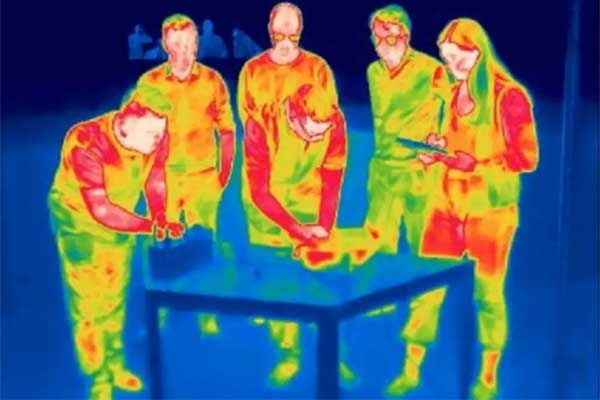- Solar radiation heats the earth's crust significantly during daylight hours, but that energy is lost into the coldness of space when the sun goes down.
- Now, researchers within the School of Photovoltaic and Renewable Energy Engineering at UNSW Sydney have successfully tested a device capable of converting infrared heat into electrical power.
The sun’s enormous energy may soon be harnessed in the dark of night following a significant advance in thermal capture technology.
Solar radiation heats the earth’s crust significantly during daylight hours, but that energy is lost into the coldness of space when the sun goes down.
Now, researchers within the School of Photovoltaic and Renewable Energy Engineering at UNSW Sydney have successfully tested a device capable of converting infrared heat into electrical power.
The team, including members of the ARC Centre of Excellence in Exciton Science, used a power-generation device called a ‘thermo-radiative diode’, which is similar to the technology in night-vision goggles.
Exciton Science Associate Investigator Nicholas Ekins-Daukes, the research team leader, said: “In the late 18th and early 19th century, it was discovered that the efficiency of steam engines depended on the temperature difference across the engine and the field of thermodynamics was born.
“The same principles apply to solar power — the sun provides the hot source and a relatively cool solar panel on the Earth’s surface provides a cold absorber. This allows electricity to be produced.
“However, when we think about the infrared emission from the Earth into outer space, it is now the Earth that is the comparatively warm body, with the vast void of space being extremely cold.
“By the same principles of thermodynamics, it is possible to generate electricity from this temperature difference too: the emission of infrared light into space.”
Norwegian researcher Rune Strandberg first explored the theoretical possibility of such a device, and researchers at Stanford University are investigating alternative approaches to capturing thermal energy at night.
The amount of energy produced through this new test is small (roughly equivalent to 0.001% of a solar cell), but the proof of concept is significant.
“We usually think of the emission of light as something that consumes power, but in the mid-infrared, where we are all glowing with radiant energy, we have shown that it is possible to extract electrical power,” Nicholas said.
“We do not yet have the miracle material that will make the thermoradiative diode an everyday reality, but we made a proof of principle and are eager to see how much we can improve on this result in the coming years.”
The team are now excited to move to the next research phase in creating and refining their own devices to harness the power of the night, and welcome potential industry partners.
—
Publication Referenced in the Article:
Michael P. Nielsen, Andreas Pusch, Muhammad H. Sazzad, Phoebe M. Pearce, Peter J. Reece, Nicholas J. Ekins-Daukes. Thermoradiative Power Conversion from HgCdtTe Photodiodes and Their Current–Voltage Characteristics. ACS Photonics, 2022; DOI: 10.1021/acsphotonics.2c00223
—
This article was written by ARC Centre of Excellence in Exciton Science.














Comments